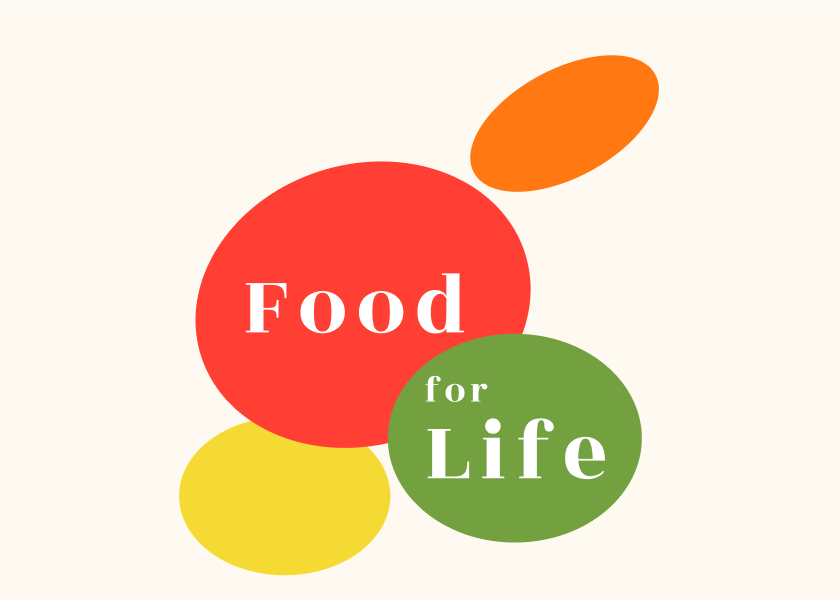Food for Life by Tim Spector - Summary
Tired of diet myths? Discover the new science of eating for your unique body & lifelong health. Unlock your gut microbiome's power and make truly informed choices about food.

The following is a summary and review of the book Food for Life by Tim Spector.
Unlock the New Science of Eating Well
Are you bewildered by conflicting diet advice and tired of restrictive eating plans? Do you wonder what truly constitutes a healthy diet for your unique body? In Food for Life: The New Science of Eating Well, Tim Spector, a renowned expert in genetic epidemiology and the gut microbiome, embarks on a groundbreaking journey to demystify nutrition. This summary will guide you through the core principles of this insightful book, revealing the pivotal role of the gut microbiome and empowering you to make informed and personalised food choices for lifelong health. Reading this summary will provide you with actionable insights and save you time while highlighting the essential knowledge contained within Spector's comprehensive guide.
Table of Contents
- About the Author
- Who Should Read This Book?
- Key Insights and Themes
- Detailed Summary
- Review
- Actionable Takeaways
- FAQs
- Conclusion
About the Author
Tim Spector is a professor of genetic epidemiology at King’s College London and an honorary consultant physician at Guy’s and St Thomas’ hospitals. He is a multi-award-winning expert in personalised medicine and the gut microbiome, and a highly cited scientist. Spector is the author of five books, including bestsellers such as Spoon-Fed and The Diet Myth. He regularly appears on TV, radio, and podcasts and is the co-founder of the personalised nutrition company ZOE, leading the world’s largest citizen science health project, the ZOE Health study. He was awarded an OBE in 2020 for his work fighting Covid-19. His extensive research and public engagement have established him as a leading voice in understanding the complex relationship between food, our bodies, and our health.
Who Should Read This Book?
Food for Life is an essential read for anyone who wants to move beyond simplistic diet rules and understand the new science of eating well. This includes:
- Individuals confused by conflicting nutrition advice and seeking evidence-based information.
- People interested in learning about the gut microbiome and its profound impact on overall wellbeing.
- Those looking for a practical and positive guide to nutrition that focuses on individual foods and ingredients rather than just misinformation.
- Anyone wanting to make informed and personalised eating choices for their own health and the health of the planet.
- Individuals experiencing gut issues or interested in improving their gut health through diet.
- Health professionals seeking a comprehensive overview of the latest nutrition science.
If you've ever wondered about the health implications of specific foods or felt overwhelmed by generic dietary guidelines, this book offers the insights and tools to become an expert in your own diet.
Key Insights and Themes
The core of Food for Life revolves around several key insights and recurring themes:
- The gut microbiome is central to our health: The trillions of bacteria in our gut play a vital role in our metabolism, immune system, and overall wellbeing.
- Personalised nutrition is key: There is no single diet that works for everyone. Our individual responses to food are unique, influenced more by our microbiome than our genes.
- Food is incredibly complex: Focusing solely on single nutrients or calories overlooks the thousands of chemicals and interactions within whole foods.
- Plant diversity is crucial for gut health: Eating a wide variety of plant species each week, ideally around 30, is highly beneficial for a diverse and healthy microbiome.
- Ultra-processed foods (UPFs) are generally unhealthy: These factory-made foods lack beneficial plant components and are often rapidly absorbed, causing negative metabolic effects.
- Question diet myths and marketing: Many widely held beliefs about "superfoods" and "toxic" foods are not supported by robust scientific evidence.
- Focus on real, whole foods: Prioritising minimally processed foods in their natural form is essential for optimal nutrition.
- Small, consistent changes matter: You don't need to be perfect. Making gradual and sustainable changes to your diet over time will have a significant impact.
Detailed Summary
Food for Life is structured to guide readers through the foundational science of nutrition to practical advice on everyday eating.
Part One: Food for Life lays the groundwork for understanding the new science of eating well:
- What is the microbiome? This chapter introduces the vast community of microbes in our gut and their profound influence on our health. It highlights the advancements in technology that allow us to measure and understand these microbes.
- Why do we love food? This explores the complex reasons behind our food cravings and preferences. Spector shares his personal health scare in Italy that sparked his deep dive into nutrition.
- What foods are really healthy? This chapter delves into the nutritional value of various food groups, emphasizing the benefits of plant-based diets and the importance of plant diversity. It discusses how plants are "chemical factories" producing thousands of compounds beneficial for our health and our microbes.
- What foods are unhealthy? Spector tackles the surprisingly difficult task of defining unhealthy foods, focusing on ultra-processed foods (UPFs) that lack beneficial components and are rapidly absorbed.
- Can foods ‘boost’ your immune system? This chapter examines the evidence behind foods and supplements marketed for immunity, finding little support for many claims, including high doses of vitamin D. The importance of a healthy gut microbiome for immune function is highlighted.
- How can we choose better foods? This provides guidance on navigating the complex world of food information, encouraging readers to look beyond deceptive labels and focus on whole, diverse ingredients.
- How does storing, processing and cooking alter food? This explores the impact of different food preparation methods on nutrient content and the microbiome. For example, it notes that some probiotic foods lose their beneficial microbes through processing.
- What to eat to save the planet? This chapter addresses the environmental impact of our food choices, advocating for more plant-based eating and sustainable food systems.
- How are we all unique? This emphasizes the concept of individualised responses to food, highlighting the role of genetics and, more significantly, the gut microbiome. The ZOE PREDICT studies are mentioned, demonstrating the variability in how individuals metabolise the same foods.
- What is the future of food? Spector explores potential innovations in food production, including plant-based alternatives and lab-grown meat.
- So, now what should I have for dinner? This concluding chapter of Part One offers practical advice and encouragement for applying the principles discussed.
Part Two: Foods delves into specific food categories, offering detailed insights based on the latest scientific understanding:
- Fruits: Explores the benefits beyond basic vitamin content, addressing concerns about sugar and highlighting the value of diverse fruit intake. The processing of fruit juices into UPFs is discussed.
- Vegetables: Emphasises the vast array of edible plants and their unique chemical profiles. The creation of "baby carrots" from less nutritious parts of larger carrots is noted.
- Legumes: Highlights the benefits of chickpeas and other legumes for glucose control and gut health due to their unique fibre and interaction with the microbiome.
- Cereals and Grains: Distinguishes between whole grains and refined products, questioning the nutritional value of highly processed breakfast cereals and their added vitamins. The importance of real sourdough bread is discussed.
- Fungi and Mushrooms: Explores the nutritional value and potential health benefits of various types of mushrooms.
- Meat: Examines the complex relationship between meat consumption and health, differentiating between processed and unprocessed meats and considering environmental impacts. The risks associated with antibiotic use in meat production are highlighted.
- Fish: Reviews the evidence for the health benefits of fish, questioning some of the overhyped claims, particularly regarding omega-3 supplements. Sustainability concerns and microplastic pollution are also mentioned.
- Milk and Cream: Challenges some common myths about dairy and explores different types of animal milk. The trend towards full-fat dairy is noted.
- Cheese: Celebrates the nutritional value and microbial diversity of cheese, sharing Spector's personal (short-lived) cheese-only diet experiment.
- Sweet Treats: Deconstructs the different types of sugar and artificial sweeteners, highlighting their impact on blood sugar and questioning the "health halo" around some natural sweeteners like honey. The difference between artisan and industrial chocolate is discussed.
- Nuts and Seeds: Explores the nutritional benefits of various nuts and seeds, including their fibre, healthy fats, and potential effects on satiety and metabolism.
- Seasoning, Herbs and Spices: Highlights the often-overlooked contribution of these ingredients to fibre and polyphenol intake, and their positive impact on gut microbes. The complexities and potential oversimplification of salt recommendations are discussed.
- Liquids, Oils and Condiments: Examines the health effects of common beverages like tea and coffee, the truth behind water intake recommendations, and the varying quality of olive oils and vinegars.
Part Three: Food Tables and Tips provides practical resources, including tables on polyphenol, fibre, and sugar content of fruits, environmental impact of proteins, and tips for using spices. It reinforces key takeaways and offers actionable advice for incorporating the book's principles into daily life.
Review
Food for Life is a highly informative and engaging book that successfully translates complex scientific research into accessible language. Spector's personal anecdotes and clear explanations make the science relatable, and the book's emphasis on personalised nutrition and gut health feels refreshingly modern and evidence-based. A major strength of the book is its comprehensive coverage of various food groups, going beyond simple "good" or "bad" categorisations and delving into the nuances of individual foods and their effects. The debunking of common diet myths is particularly valuable, empowering readers to critically evaluate nutritional information.
However, the sheer amount of information presented could feel overwhelming for some readers. While Spector strives for clarity, the depth of detail in certain chapters might require careful attention. Additionally, while the book champions personalised nutrition, it acknowledges that fully individualised dietary plans often require access to testing and resources like ZOE, which may not be universally available. Nonetheless, the book provides a strong foundation for understanding the principles of personalised eating and making better choices based on general scientific understanding.
Actionable Takeaways
Here’s how to apply these lessons in real life:
- Prioritise plant diversity: Aim to eat at least 30 different plant types each week, including fruits, vegetables, nuts, seeds, herbs, and spices. Keep a running tally to track your progress.
- Embrace real, whole foods: Choose minimally processed foods in their natural form over ultra-processed options whenever possible. Pay attention to ingredient lists, opting for products with fewer and recognisable ingredients.
- Nurture your gut microbiome: Include fermented foods in your diet regularly.
- Be mindful of food processing: Consider how storing, processing, and cooking methods might affect the nutritional value of your food.
- Question marketing claims: Be sceptical of "superfood" labels and miracle cure promises. Look for robust scientific evidence rather than hype.
- Cook for yourself more often: This gives you greater control over ingredients and preparation methods.
- Experiment with your diet: Pay attention to how different foods make you feel. Understand that individual responses vary.
- Reduce consumption of ultra-processed foods (UPFs): Be aware of hidden ingredients and aim to limit these factory-made products.
- Focus on nutritional quality over just calories: Choose nutrient-dense foods even if their calorie count is similar to less nutritious options.
- Consider the environmental impact of your food choices: Opt for more sustainable options, such as plant-based proteins and locally sourced produce.
FAQs
- What is "Food for Life" about? "Food for Life" explores the new science of eating well, focusing on the central role of the gut microbiome and the concept of personalised nutrition. It aims to debunk common diet myths and empower readers to make informed food choices based on scientific evidence.
- Is "Food for Life" worth reading? Yes, "Food for Life" is highly recommended for anyone seeking a comprehensive and evidence-based understanding of nutrition. It offers valuable insights into the complexity of food, the importance of gut health, and practical advice for making healthier and more personalised dietary choices.
- Does Tim Spector recommend a specific diet in "Food for Life"? No, Spector does not advocate for a single, restrictive diet. Instead, he emphasises the importance of individualised eating based on understanding your own body and, particularly, your gut microbiome. He encourages eating a wide variety of whole, plant-based foods and limiting ultra-processed foods.
- What is the main takeaway from "Food for Life"? A key takeaway is that our relationship with food is deeply personal and intricately linked to our gut microbiome. The book encourages moving away from generic diet rules and towards making informed choices that nourish our unique biology and promote long-term health.
Conclusion
Tim Spector's Food for Life is more than just a book about nutrition; it's a guide to understanding your body's unique relationship with food in the era of new scientific discoveries. By illuminating the power of the gut microbiome and advocating for personalised, evidence-based eating, Spector empowers readers to break free from diet dogma and cultivate a healthier, more sustainable way of eating for life. Embrace the complexity of food, listen to your body, and embark on your own journey to discover the foods that truly nourish you.
As an Amazon Associate, ShelfHelp may earn money from qualifying purchases. Needless to say, ShelfHelp only includes affiliate links to books we recommend and think are worth your time reading.




